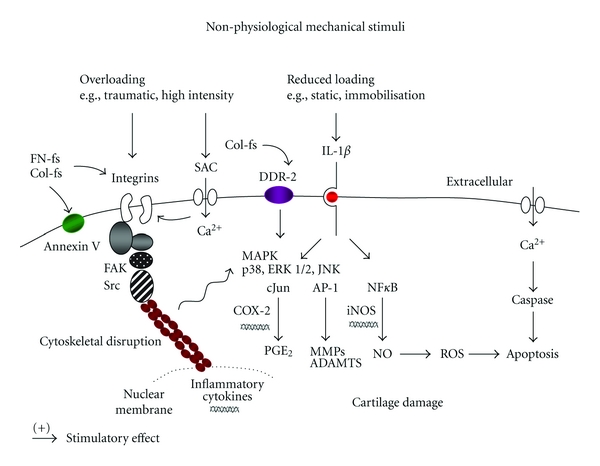Figure 1.

Effect of nonphysiological mechanical stimuli on signal transduction pathways in chondrocytes. Overloading activates the α5β1 integrin which disrupts the actin cytoskeletal network and stimulates members of the nuclear factor-kappa B (NFκB) and mitogen activated protein kinase (MAPK) family. These factors increase the production of nitric oxide (NO), proteolytic enzymes (MMP-1, 3, 8, and 13), ADAMTS (4 and 5), reactive oxygen species (ROS), cytokines (IL-1, TNFα), and prostaglandins (PGE2), which mediate cartilage damage. Mechanical signals may indirectly interact with the stretch-activated ion channels (SACs) or increase intracellular calcium levels, which stimulate caspase production (3 and 9) leading to apoptosis. The protease enzymes increase catabolic activities and accelerate tissue damage via production of fibronectin (FN-fs) or collagen fragments (Col-fs), which bind to the integrins, annexin V, discoidin domain receptor 2 (DDR-2), and induce cytokines. Reduced loading (e.g., static and immobilisation) stimulates the IL-1 receptor which activates ERK1/2, AP-1 and MMPs leading to reduced aggrecan and collagen type II synthesis.
